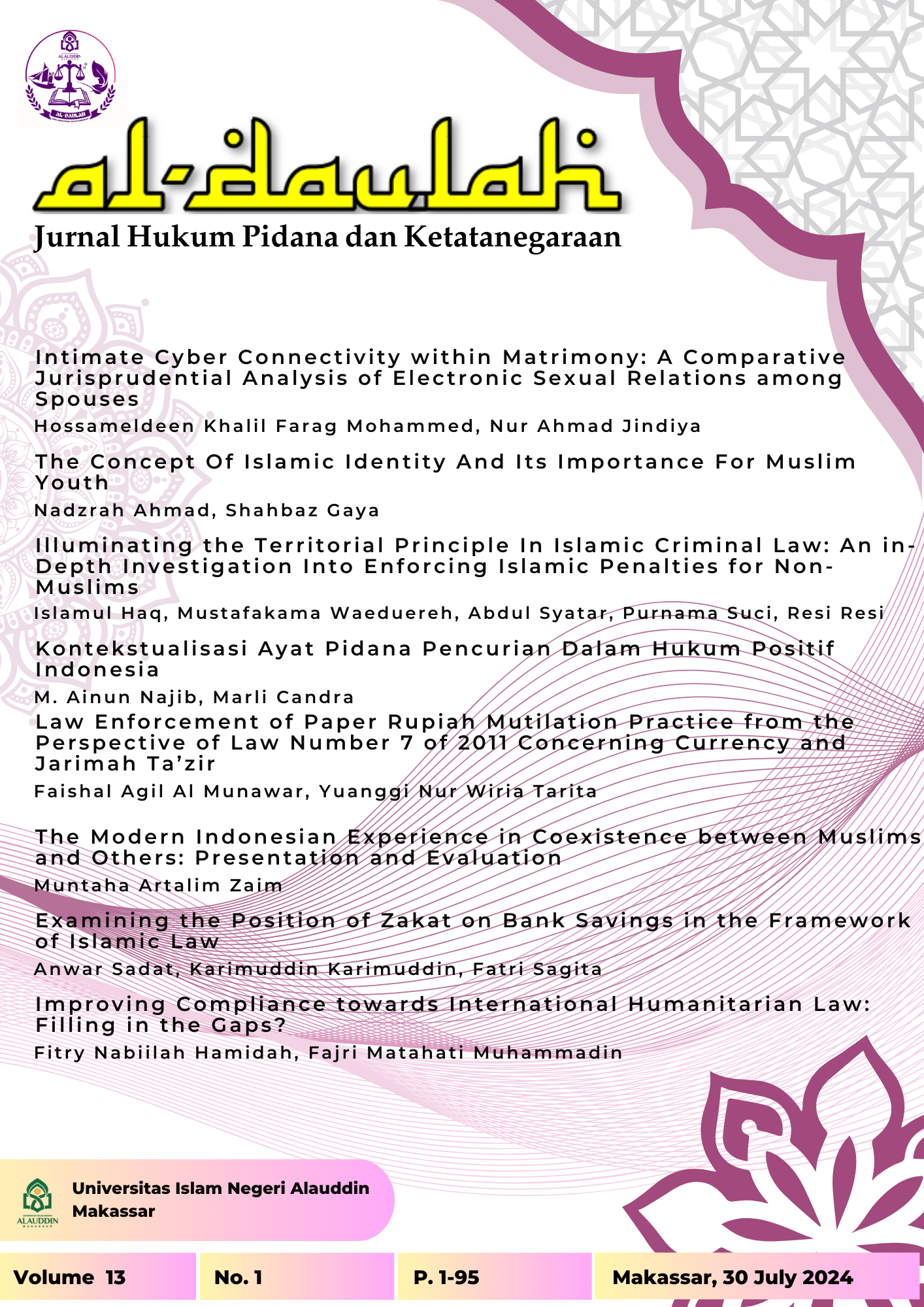Misi Emansipatoris Alqur’an dalam Relasi Seksualitas Antara Majikan dan Budak Perempuan
Abstract
The Qur'an was revealed during the oppression of man by man more institutionalized in the form of slavery. This institution fostered and developed by international public civilization in a variety of ways in which the war became a major facility in the preservation of slavery in addition to other facilities. Among of the them are human trafficking because of poverty, slave inheritance itself and by other means inhumane. In this context, the Qur’an’s transformative declaration in restoring human status of slaves should be appreciated including the concept of Qur'an in managing sexuality relations between male employer and female slaves. Emancipatory movement of the Qur'an in this case implementated by positioning the women slave as part of a marginal women community who able to accompany the life of a man in a "married" or "marry her" with the believer independent men (mukmin).
References
Abu Abdillah, Al-Zubair Ibn Bikar Ibn Abdillah Ibn Mush’ab al-Zubairi. Al- Muntakhab Min Kitab Azwaj al-Nabi, Jilid I, Cet. I; Beirut: Muassasah al-risalah, 1403 H.
Asad, M. The Message of the Qur’an. Gibraltar: Dar al-Andalus, 1980.
Al-Ashfahaniy, Al-Raghib. Mu’jam Mufradat Azfaz Al-Qur’an. Beirut-libanon: Dar al- Fikr, t.th.
Boisard, Marcel A. L’ Humanisme de L’Islam, terj. M. Rasyidi, Humanisme dalam Islam, Cet.I; Jakarta: Bulan Bintang, 1980.
Al-Bukhari, Muhammad Ibn Ismail Abu Abdillah al-Ju’fi. Dari Burdah dari bapaknya, Shahih al-Bukhari, Hadis no. 2849, Jilid III, Cet.III; Yamamah-Beirut: Dar Ibn Katsir, 1987.
Hakim, Nur. Sejarah dan Peradaban Islam. Malang: UMM Press, 2004.
Ibn ‘Asakir, Abu Mansur Abd al-Rahman Ibn Muhammad Ibn Hibatillah. Al-Arba’ina fi Manaqib Ummahat al-Mu’minin, Jilid I, Cet.I; Damsyiq: Dar al-Fikr, 1406 H.
Ibn Katsir, Ismail Ibn Umar al-Dimasyqi abu al-Fida. Tafsir al-Qur’an al-Azim. Jilid III, Beirut: Dar al-Fikr, 1401.
Ibn Qudamah, Abdullah Ibn Ahmad al-Maqdisi. ‘Umdat al-Fiqhi, Jilid I (Thaif: Maktabah al-Tharafain, t.th.
Ibnu al-Qayyim, Abu Abdillah Syamsuddin al-Dimasyqi, I’lam al-Muwaqqi’in ‘an Rabbil ‘Alamin, Jilid II, Beirut: Dar al-Jail; 1973.
Lewis, Bernard. Race and Slave in Middle East: An Historical Enquiry. New York: Oxford University Press, 1990.
Pipes, Daniel. Slave Soldiers and Islam: The Genesis of a Military System, terj. Soni Siregar, Tentara Budak dan Islam: Asal Muasal Sebuah Sistem Militer. Jakarta: Pustaka Firdaus, 1986.
Qutub, Muhammad. Terj. Alwi AS, Jawaban Terhadap Alam Fikiran Barat yang Keliru tentang Islam, Bandung: Diponegoro, 1993.
Rahman, Fazlur. Islam and Modernity: Transformation of Intelektual Tradition terj. Ahsin Muhammad, Islam dan Modernitas Transformasi Intelektual. Bandung: Pustaka, 1985.
Al-Razi, Fakhruddin Muhammad Ibn Umar al-Tamimi al-Syafi’i. Mafatih al-Gaib Al- Tafsir al-Kabir, Jilid XXV, Cet. I; Beirut: Dar Al-Kutub al-Ilmiyyah, 2000.
Al-Razi, Muhammad Ibn Abi Bakr Ibn Abd al-Qadir. Mukhtar al-Shahhah, Jilid I Beirut: Maktabah Lubnan, 1995.
Al-Shiddieqy, Hasbi. Tafsir al-Nur. Jakarta: Bulan Bintang; 1965.
Syalabi, Ahmad. Islam dalam Timbangan, terj. Abu Laila dan M. Thahir, Bandung: PT. al-Ma’arif, 1982.
Ulwan, Abdullah Nasih. Jawaban Tuntas Masalah Perbudakan, terj. Ainurrafiq Saleh, Jakarta: PT. al-Islami Press, 1988.
The authors of a work hold the copyright and grant the Al-Daulah: Jurnal Hukum Pidana dan Ketatanegaraan the right of first publication. The work is also licensed under the Creative Commons Attribution License (CC BY 4.0), which enables others to share the work while acknowledging the authorship and initial publication in the journal. The authors can make separate contractual agreements for the non-exclusive distribution of the published version of the work, such as by posting it to an institutional repository or editing it for a book, with an acknowledgment of its initial publication in this journal. Authors are allowed and encouraged to post their work online, such as in institutional repositories or on their website, before and during the submission process. This can lead to productive exchanges and greater citation of the published work.


